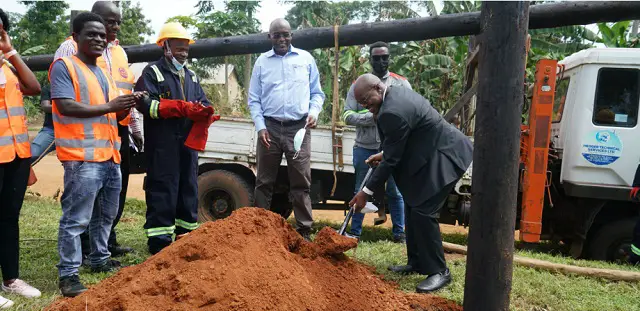Eng. Harrison Mutikanaga, the managing director at the Uganda Electricity Generation Company Limited (UEGCL) accompanied by the state minister for Finance, Planning and Economic Development, who doubles as the Member of Parliament for Ntenjeru North, Amos Lugoloobi, launched in Kiteredde village, a project to connect a total of 60 villages to electricity in Kayunga district that is located in the central region of the East African country.
Also Read: Government Commissions 25 Solar Mini-Grids in Lamwo, Uganda
Mr. Mutikanaga said that this project is a part of the second phase of the Community Development Action Plan (CDAP) for communities living near the Isimba Hydropower dam.
An overview of the project to connect 60 villages to electricity in Kayunga
According to the UEGCL managing director, the project to connect the 60 villages to electricity in Kayunga comprises the construction of 30.28 kilometers of medium voltage lines, 56.15 kilometers of 3 phase low voltage lines, 23.4 kilometers of single phase low voltage lines, and 51 transformers of 50KvA.
The project will be carried out by Megger Technical Services, under close supervision of UEGCL and the Rural Electrification Programme in the Ministry of Energy and Mineral Development, in a span of 24 months.
Construction of multi-purpose block at St. Peters Kibuzi Secondary School
UEGCL also broke the ground for the construction of a multi-purpose block that consists of nine classrooms, a library, four laboratories, a main hall, staff rooms, and seven offices, at St. Peters Kibuzi Secondary School in Kayunga District.
The building will be constructed alongside a boundary wall around the entire area of the school perimeter at a cost of slightly over US$ 1.5M.
Upon completion of this project, St. Peters Kibuzi Secondary School will join more than seven learning institutions in Kayunga and Kamuli districts, including primary, secondary, and technical schools, that now have new classrooms, dormitories, and sanitary facilities, or have their old infrastructure refurbished as part of the CDAP.

Leave a Reply